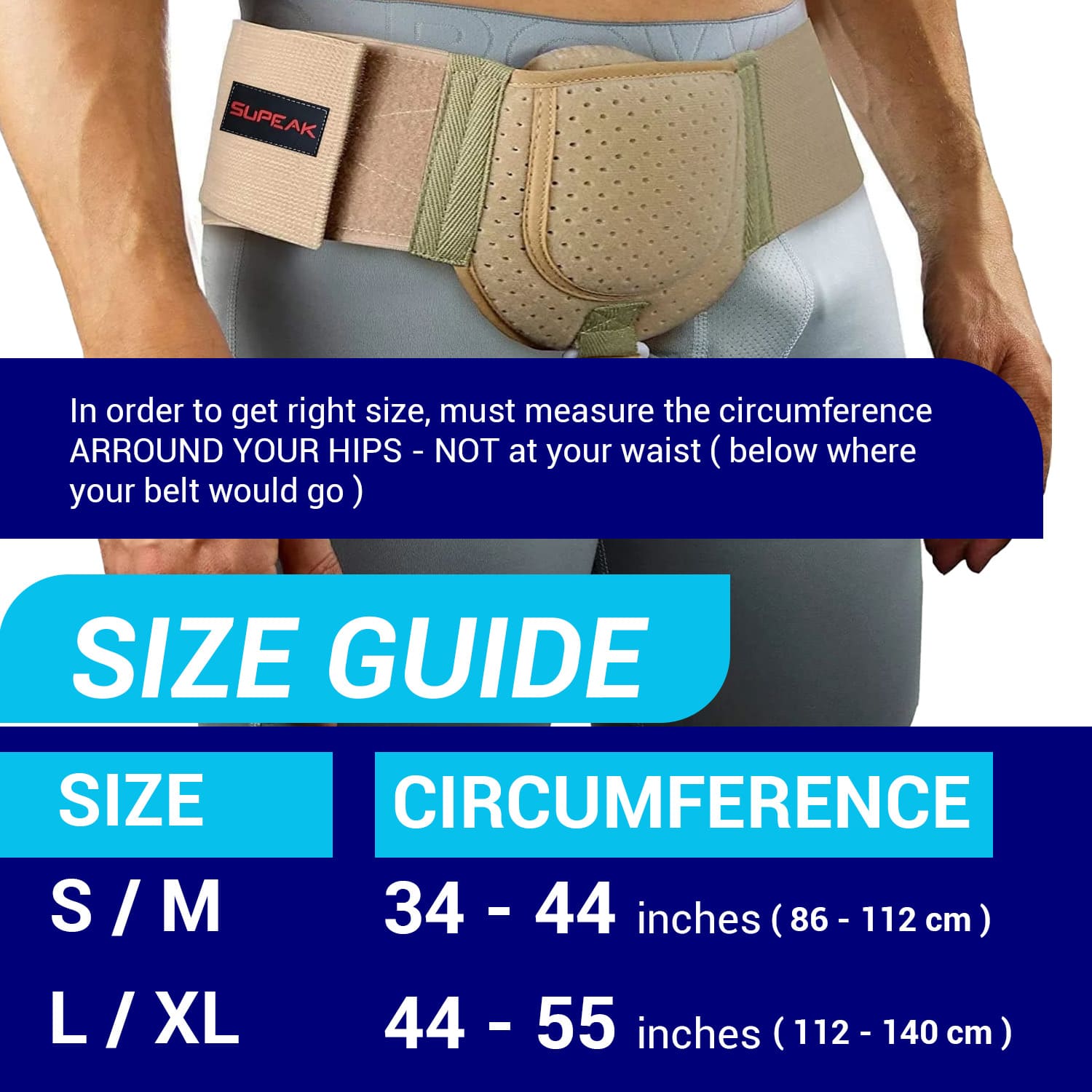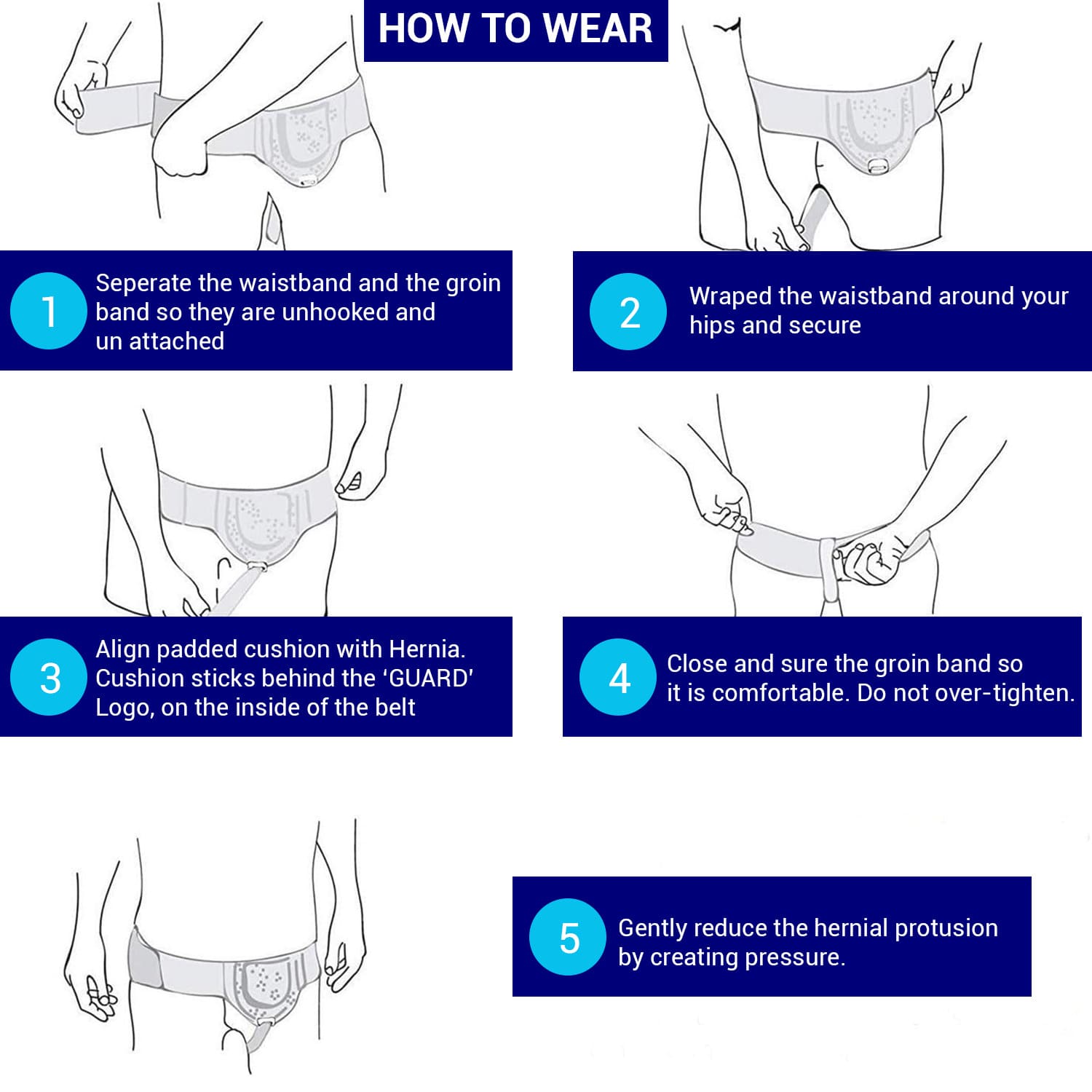Abdominal Hernia Belts
What is a Hernia Belt, and Why Do People Use It?
A hernia belt is a specially designed support device that helps manage hernias by applying gentle, targeted compression. It’s commonly used to ease discomfort, reduce swelling, and prevent complications, especially before surgery or during recovery. Many people also wear hernia belts for everyday comfort, especially if they have an active lifestyle or need extra support to get through their day.
Explore more options in our Abdominal & Hernia Support category to find complementary solutions, such as Abdominal Binders for additional support.
Do Hernia Belts Really Work?
Yes, hernia belts can be really helpful. They don’t fix a hernia, but they provide temporary relief by offering support and reducing pressure on the affected area. This can be a game-changer for people with inguinal or abdominal hernias, particularly during activities like lifting heavy objects or standing for long periods. Think of them as a way to manage symptoms and make daily life a little easier.
Can Wearing a Hernia Belt Replace Surgery?
Not quite. Hernia belts are great for managing discomfort and stabilizing the area temporarily, but they can’t actually fix a hernia. Surgery is the only permanent solution. However, wearing a belt can help you stay comfortable and manage your symptoms until you’re ready or able to have surgery.
How Do You Properly Wear a Hernia Belt?
For the best results, wear the hernia belt snugly around the affected area, but not so tight that it causes discomfort. Position the pad or support directly over the hernia. It’s a good idea to adjust the belt as needed during activities to ensure comfort and prevent skin irritation.
When Should You Wear a Hernia Belt?
You should wear a hernia belt when you’re experiencing discomfort, engaging in physical activities that increase pressure on your abdomen, or following your doctor’s advice for symptom management. After surgery, a hernia belt can provide gentle compression to support the healing process.
For additional recovery support, explore our Abdominal & Hernia Support options.
Types of Hernias
Hernias can happen in different parts of the body, and understanding the type of hernia is important for choosing the right treatment or support. Here are some of the most common types:
Inguinal Hernia
The inguinal hernia is one of the most common types, especially in men. It occurs in the groin area when part of the intestine pushes through a weak spot in the abdominal muscles. Many people find relief and support with an inguinal hernia belt, which is designed to reduce discomfort and help with day-to-day activities.
Abdominal Hernia
Abdominal hernias occur when there’s a bulge or weakness in the abdominal wall, often caused by strain or past injuries. They can be quite uncomfortable, but a hernia support brace can help by providing stability and reducing strain on the affected area.
Umbilical Hernia
This type of hernia happens near the belly button, where the abdominal wall is naturally weaker. While it’s common in infants, adults can also experience this hernia due to pressure from lifting heavy objects or pregnancy. An umbilical hernia support belt is a simple and effective way to manage symptoms and get relief.
Hiatal Hernia
A hiatal hernia happens when part of the stomach pushes up through the diaphragm into the chest cavity. This type is different from others because it’s not usually treated with a belt. Instead, managing symptoms like acid reflux often involves lifestyle changes or medications.
Incisional Hernia
If you’ve had abdominal surgery, you might develop an incisional hernia where the surgical incision hasn’t fully healed. A post-surgery hernia belt can provide much-needed support, reduce pain, and protect the area during recovery.
Femoral Hernia
Femoral hernias are less common and tend to affect women more often than men. These occur in the upper thigh or groin area when tissue pushes through the femoral canal. While surgery is often needed, a femoral hernia belt can provide temporary relief and make movement more comfortable.
Parastomal Hernia
A parastomal hernia forms around a stoma, an opening created surgically for waste elimination. It’s a common issue for people with ostomies, but wearing a specially designed parastomal hernia support belt can help reduce discomfort, provide gentle compression, and prevent further complications.
Each type of hernia may require different treatment approaches, so it's important to consult with a healthcare provider to find the right support, such as a hernia relief belt or hernia compression belt, for your specific condition.
See Abdominal Binders for complementary post-surgery recovery solutions.




















